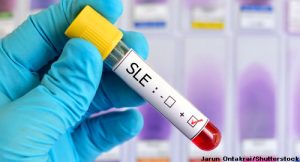 EULAR 2022 (VIRTUAL)—Systemic lupus erythematosus (SLE) is a heterogeneous disease, and therapies must be individualized for optimal care. In the past few years, we’ve seen the advent of several new SLE drugs, and older drugs continue to play a role. So where should we start?
EULAR 2022 (VIRTUAL)—Systemic lupus erythematosus (SLE) is a heterogeneous disease, and therapies must be individualized for optimal care. In the past few years, we’ve seen the advent of several new SLE drugs, and older drugs continue to play a role. So where should we start?
At the 2022 Congress of the European Alliance of Associations for Rheumatology (EULAR), Martin Aringer, MD, Department of Internal Medicine III, Rheumatology, University Hospital Carl Gustav Carus at the Technische Universität Dresden, Germany, provided practical tips on when and how to use new therapies.
Basic Principles
When it comes to SLE management, Dr. Aringer explained, “We need to get both the inflammatory activity and the glucocorticoid dose down. If we fail in either regard, it’s likely the outcome in decades to come won’t be very good for the patient.”
Additionally, medication selection is only a small part of SLE care. Medication adherence, trust and understanding of disease are paramount. And several situations—like drug intolerances or contraindications, antiphospholipid syndrome, or the desire to have a child—can complicate management. “Every SLE patient is different. It can be any combination [of the above],” Dr. Aringer noted.
Therapeutic Selection
Medication regimens for SLE patients can be as heterogenous as the patients themselves. Hydroxychloroquine remains the cornerstone of SLE treatment.1 But when hydroxychloroquine alone fails to control disease, the next best steps aren’t clear.
Dr. Aringer advised, “Figure 1 from the 2019 EULAR recommendations for the management of SLE is a good place to start.” The figure outlines recommended drugs for the treatment of non-renal SLE based on severity of disease manifestation, with grading of recommendations provided for each drug.1 For mild to moderate SLE, methotrexate and azathioprine are listed as options. For moderate to severe disease, calcineurin inhibitors, mycophenolate, belimumab, cyclophosphamide and rituximab can also be considered. Newer therapies like anifrolumab and voclosporin aren’t included in this figure given the timing of publication.
Options
Newer therapies are exciting, but older drugs still have a place in SLE care. Dr. Aringer noted, “Data show that mycophenolate and azathioprine take a bit of time to work. Peak effect is seen at about 12 months. So, if you can be patient, be patient.”2
Belimumab is U.S. Food and Drug Administration (FDA) approved for the treatment of autoantibody-positive SLE and active lupus nephritis patients who are receiving standard therapy. Belimumab can take up to six months to become fully effective, but it may improve fatigue a bit earlier.3 Dr. Aringer explained, “Overall, it looks like belimumab works in most domains. Hematologic manifestations of SLE are the one big exception, and that’s something we see in quite a few SLE drugs.”4

